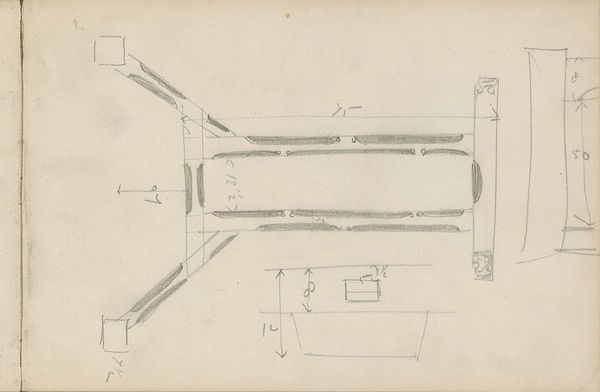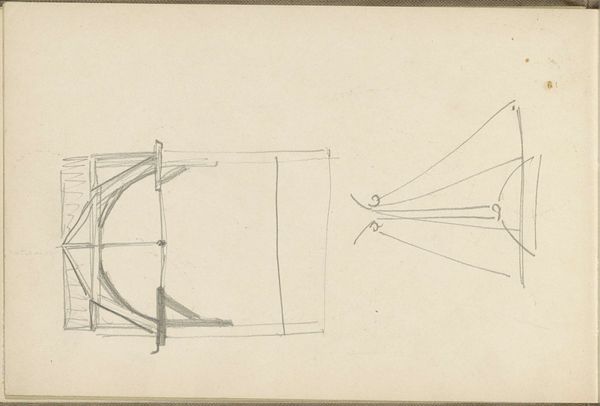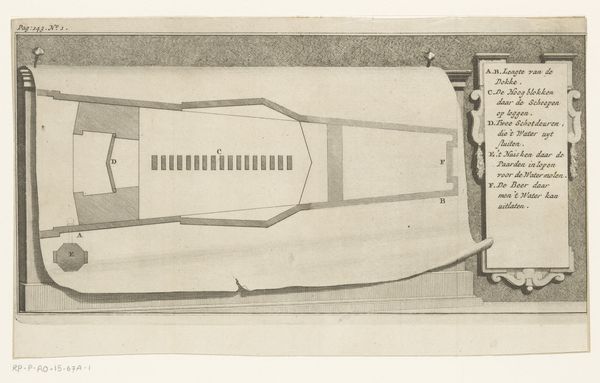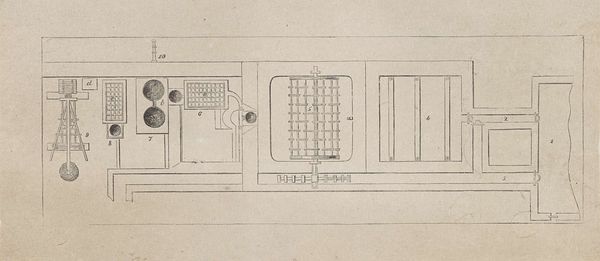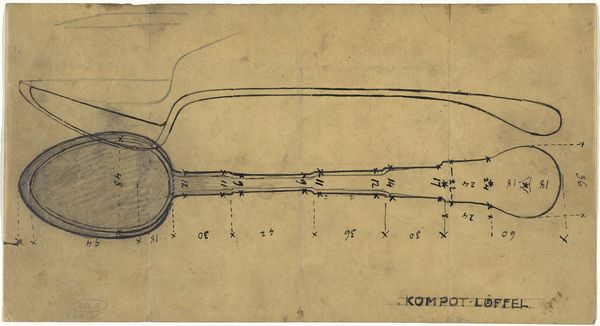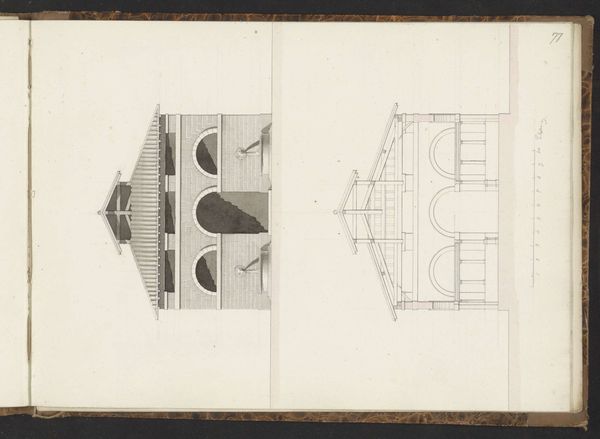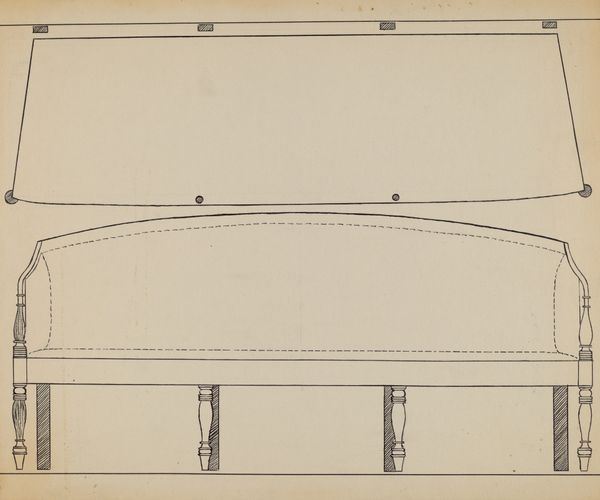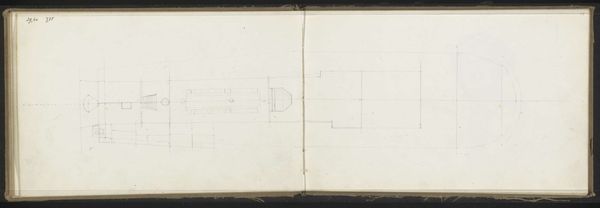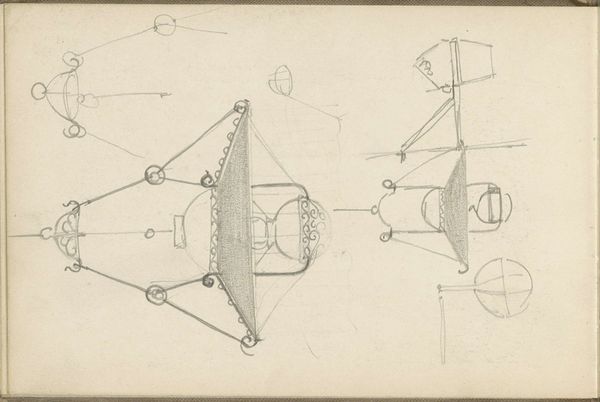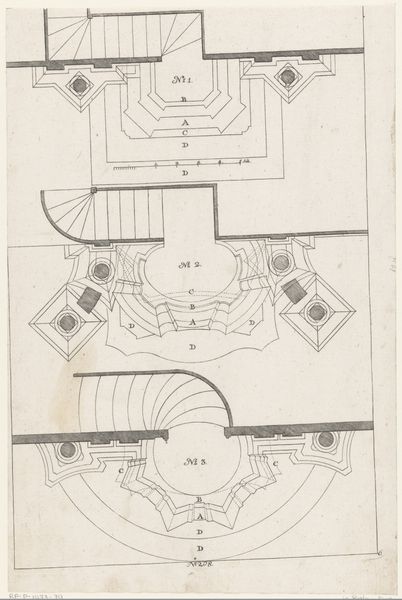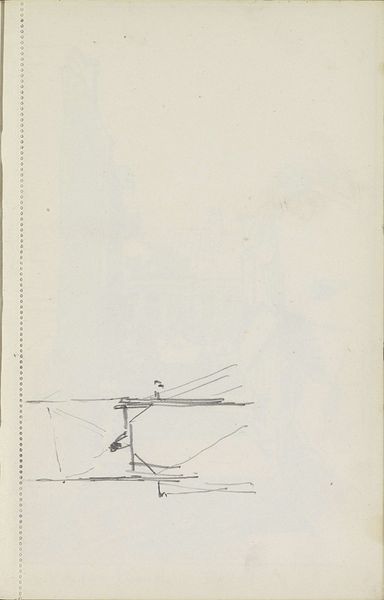
drawing, print, ink
#
drawing
# print
#
old engraving style
#
ink
#
geometric
#
line
#
realism
Dimensions: height 98 mm, width 186 mm
Copyright: Rijks Museum: Open Domain
Editor: So, this is "Vier doorsneden van een schip," or "Four Sections of a Ship," an ink drawing from between 1836 and 1912, by Isaac Weissenbruch, here at the Rijksmuseum. It feels more like a technical blueprint than a piece of fine art, almost sterile. What's your take on this work? Curator: It’s fascinating how these seemingly technical drawings occupied a space within the artistic landscape. Consider the Dutch Republic's reliance on maritime power and trade during this period. How might the detailed documentation of ship construction reflect not only practical knowledge, but also national pride and economic ambition? Editor: That's a good point. So, something seemingly functional also carries social meaning? Curator: Precisely. These weren't just diagrams, but documents reflecting the social and economic significance of shipbuilding. Who commissioned them and how were they disseminated? Were they for builders only or part of a broader public understanding of the Dutch dominance on the seas? Editor: Hmm, makes you wonder how much national strategy was embedded in the creation and distribution of these types of images. So is the act of displaying this drawing in the museum taking it out of the context for which it was made? Curator: Museums transform objects, imbuing them with new meaning. By placing this drawing within an art historical context, we invite viewers to contemplate its aesthetic qualities and symbolic significance, but possibly distance ourselves from the more pragmatic original purposes. The key is encouraging people to reflect on how the object's meaning is mutable across its history. Editor: That definitely gives me a fresh perspective. It's not just lines and angles, it’s a cultural statement, both then and now! Curator: Exactly, and understanding this kind of art makes us question where we see the value in things, how institutions construct that value, and what we can learn from images meant for something far from a museum wall.
Comments
No comments
Be the first to comment and join the conversation on the ultimate creative platform.
